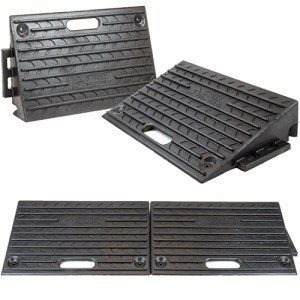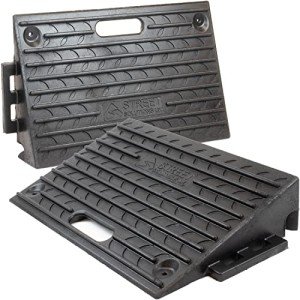
Portable Disabled Ramp
Add a review FollowOverview
-
Founded Date June 2, 1919
-
Sectors Restaurant / Food Services
-
Posted Jobs 0
-
Viewed 23
Company Description
What’s The Job Market For Ramps For Disabled Professionals?

Understanding Ramps For Disabled Accessibility: A Comprehensive Guide
In today’s world, ensuring ease of access for individuals with impairments is an important element of community preparation and development. Among the essential parts of ease of access functions is ramps, which supply an essential methods of navigation for those using wheelchairs, walkers, or simply requiring an extra bit of assistance. This article aims to supply a summary of ramps for disabled people, offering helpful insights and assistance on their style, types, benefits, and best practices, alongside an extensive FAQ area.
The Importance of Ramps for Disabled Accessibility
Ramps play a crucial role in improving the mobility and independence of people with disabilities. By making it possible for easier access to structures, public spaces, and transportation, these structures considerably decrease the barriers that individuals might encounter. Below are some bottom lines that highlight their significance:
- Inclusion: Ramps promote an inclusive society, allowing people with disabilities to take part in daily activities, community events, and work.
- Safety: They supply a safer option to stairs, decreasing the threat of mishaps for both users with mobility obstacles and caretakers.
- Legal Compliance: Many nations have actually developed laws and standards for accessibility (like the Americans with Disabilities Act in the USA), needing the setup of ramps in public buildings.
Table 1: Accessibility Legislation Overview
| Region | Legislation | Key Provisions |
|---|---|---|
| United States | Americans with Disabilities Act (ADA) | Mandates available styles for public areas and structures. |
| Canada | Accessibility for Ontarians with Disabilities Act (AODA) | Requires public-sector companies to follow ease of access requirements. |
| European Union | Availability Act | Develops typical requirements for accessibility throughout member states. |
Kinds of Ramps
Ramps come in numerous kinds, each designed to suit specific requirements and contexts. Below are the most common types of ramps utilized for disabled access:
- Permanent Ramps: Installed as a part of the building structure, often made from concrete or wood.
- Portable Ramps: Lightweight and created for temporary usage, commonly utilized for individual access to automobiles or occasions.
- Suction Cup Ramps: Used for mobility help, these ramps can be connected to cars, providing a versatile solution for those who take a trip.
- Threshold Ramps: Designed to bridge the gap in between 2 surfaces at entrances or entry points, facilitating smooth transitions.
Table 2: Ramp Types and Features
| Type | Product | Best Use Cases | Pros | Cons |
|---|---|---|---|---|
| Permanent Ramps | Concrete/Wood | Public buildings/residential | Resilient, low maintenance | Expensive to set up |
| Portable Ramps | Aluminum/Fiberglass | Events/vehicles | Easy to carry | May not support heavy weights |
| Suction Cup Ramps | Different | Automobiles | Versatile and adjustable | May require more upkeep |
| Threshold Ramps | Rubber/Wood | Doorways | Basic installation | Restricted height capacity |
Advantages of Ramps
The installation of ramps offers numerous benefits, as laid out below:
- Enhanced Mobility: Ramps permit users easier movement up and down inclines, decreasing stress and fatigue.
- Self-reliance: With the availability of ramps, individuals with mobility problems are most likely to navigate their surroundings without support, boosting their confidence and autonomy.
- Increased Opportunity: Accessible ramps guarantee that individuals with disabilities can reach workplaces, schools, and social spaces, promoting wider participation in society.
Finest Practices for Ramp Design
Producing effective and safe ramps requires adherence to specific standards and principles. Here are some finest practices to consider:
- Follow Accessibility Standards: Always consult local accessibility standards to make sure compliance with policies.
- Select the Right Slope: The perfect slope ratio is generally 1:12 for wheelchair access. This implies one system of vertical increase for every twelve systems of horizontal run.
- Non-Slip Surfaces: Use materials and finishes that provide sufficient grip, particularly throughout wet or icy conditions.
- Add Handrails: Installing sturdy handrails on both sides of the ramp can supply extra support and safety for users.
- Regular Maintenance: Conduct regular inspections to recognize wear or damage and carry out timely repairs as required.
Table 3: Ramp Design Considerations
| Design Aspect | Recommendation | Value |
|---|---|---|
| Slope Ratio | 1:12 ratio | Ensures ease of usage for wheelchair users |
| Width | Minutes. 36 inches | Allows for safe passage for users and caretakers |
| Surface area Material | Non-slip, durable product | Avoids accidents and supplies durability |
| Handrails | Minimum 34 to 38 inches above ramp surface | Provides additional support for users |
| Turnaround Space | Minutes. 5ft x 5ft for modifications in direction | Accommodates users to pivot securely |
Regularly Asked Questions (FAQs)
1. Who certifies as disabled for ramp availability?
The term “disabled” varies across legislation and organizations. Generally, it refers to individuals with physical disabilities that restrict their mobility or capability to browse stairs, including those using wheelchairs, walkers, or other mobility aids.
2. Are ramps needed in all public structures?
Yes, the majority of countries mandate that public buildings be available to individuals with specials needs through ramps, as detailed in accessibility legislation.
3. Can I develop my ramp, or do I need an expert?
While some homeowners might opt to construct their ramps, working with a professional with knowledge in ADA compliance is advisable to guarantee safety and regional code compliance.
4. How do I keep a portable ramp?
Routinely inspect the ramp for signs of wear and keep it tidy from debris. Ensure that any movable parts operate correctly, and shop it in a dry location to extend its lifespan.
5. What is the average expense of installing a permanent ramp?
The cost differs extensively based upon materials, style, and labor but can vary from ₤ 1,000 to ₤ 5,000 or more depending upon the site conditions and intricacy included.
Ramps for disabled people are an important element in promoting available and inclusive environments. Comprehending the types, benefits, legal ramifications, and finest practices for ramps can contribute considerably to boosting the quality of life for people with mobility challenges. As communities continue to develop and customize their infrastructure, guaranteeing availability needs to remain at the leading edge of preparing initiatives, allowing everyone to browse their surroundings successfully. Awareness, education, and dedication to accessibility will result in a more inclusive society for all.

